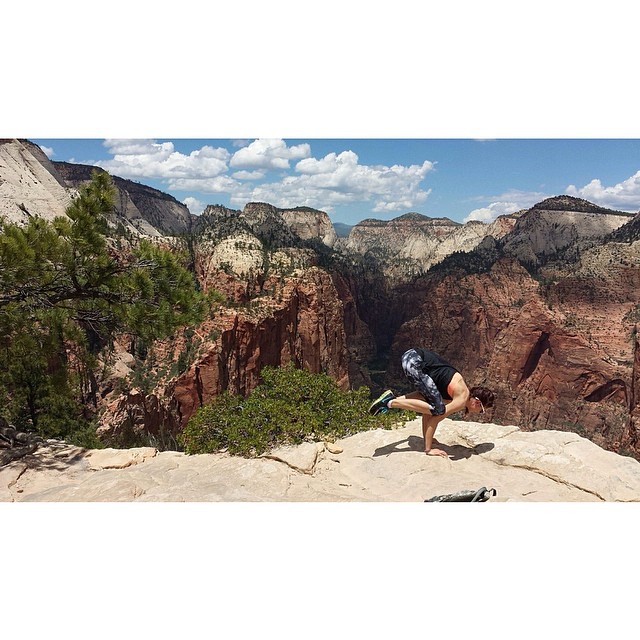The Diary of A Happy Yogi
Posted: November 19, 2014 at 12:35 pm
By: Ashley Whimpey
Poised at the top of my mat, I rolled my shoulders back, and closed my eyes. Just as my instructor requested, I inhaled and I listened for the next cue. A strange sound began to fill the room and, since I was confused, I peeked just a bit to find the source. I noticed that my instructors mouth was moving, and the sounds were coming from him. My mind supplied an answer of, “He’s chanting something,” and then the class started to move into poses. Startled, I whipped my head side to side, trying to follow the smooth flow of my fellow yogis. I couldn’t understand why the teacher wasn’t speaking a language I understood He would mutter something, and the class would move, just like magic. I, however, was extremely unenchanted. After the class ended I was able to speak with the instructor.
He told me he was using Sanskrit. Sanskrit is the language of yoga. Most asanas (that’s Sanskrit for poses) have Sanskrit names. For instance crow pose is bakasana in Sanskrit, and corpse pose is savasana. He apologized for strictly speaking in the language, and told me he doesn’t usually adhere only to the Sanskrit terms. Had it been my first yoga experience, I may have never come back. It’s intimidating enough to not feel as if I’ll be able to complete a class physically, let alone when I’m worrying about deciphering the words I’m hearing.
When you don’t understand the language being used in a class attendees have a tendency to depend on the instructor demonstration. Instructors at the front of a class in other exercise classes such as cardio kickboxing or dance formats serve as great models. The instructor shares the cues while demonstrating as participants watch, and then mirror the movement. When you are upside down and twisted under your arm in a yoga class it may be a little harder to see the instructor demonstration. A good way to overcome this is to practice yoga more often. Many simple (or seemingly simple!) poses are completed in most yoga classes. Over time you’ll become comfortable with the yoga atmosphere. You’ll also develop an understanding of how your instructor organizes a class, and be able to flow smoothly between the poses.
The experience that I have shared with you is pretty rare. Aspiring yogis should not be weary of all yoga classes being taught in languages you don’t understand. Barriers such as time or skill level shouldn’t stop you either.Yoga for twenty minutes or yoga for an hour and twenty minutes are equally beneficial. Even if all you can do is start the morning with a five minute stretch to get the blood flowing, that is a great place to start.
Keep in mind that every yoga class can be taught to include beginners. Yoga is about “honoring your practice” which means to simply do your best and be proud of that alone. A yogi who can touch their toes is no better of a yogi than the one who tries. I hope that sharing my experience encourages you to honor your practice in the near future. There is no better day to start than today!


